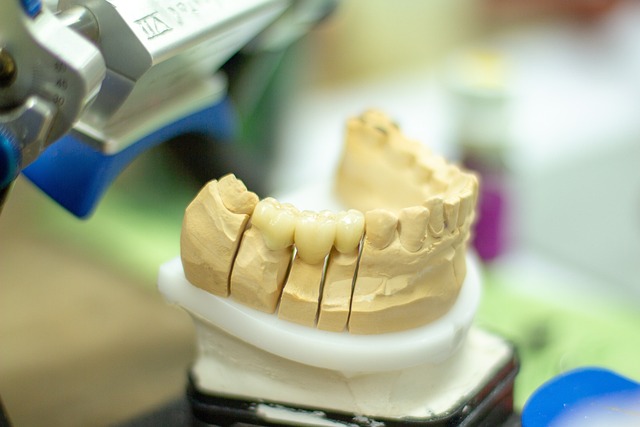Early Oral Care & Accessible Dentists in McAllen, TX

Children’s dentistry plays a pivotal role in shaping healthy oral habits for life. However, many fam…….
In the vibrant city of McAllen, Texas, a growing movement towards affordable dental care has been gaining momentum, offering hope and relief to many residents. “Low cost dentist McAllen TX” is not just a catchy phrase but a burgeoning industry that aims to make quality dental services accessible to all, regardless of financial constraints. This article delves into the multifaceted world of low-cost dentistry in McAllen, exploring its definition, global impact, economic drivers, technological innovations, regulatory framework, challenges, and future prospects. By examining these aspects, we will uncover the transformative potential of this approach to dental care and its promise for improving oral health outcomes.
Low-cost dentistry in McAllen, TX, refers to a range of dental care services provided at significantly reduced prices compared to conventional dental practices. It is a strategic approach designed to address the financial barriers that often prevent individuals from seeking regular dental check-ups and necessary treatments. This model offers a variety of services, including preventive care (cleanings, exams), basic restorative work (fillings, simple extractions), and limited orthodontics, all tailored to meet the needs of patients with limited budgets.
The concept has evolved over time, responding to growing public demand for more affordable healthcare options. In McAllen, a diverse community with varying economic backgrounds, the need for low-cost dental care became increasingly apparent. Local dentists and community leaders joined forces to create innovative solutions, leading to the establishment of dedicated low-cost clinics and partnerships with insurance providers to expand coverage.
The idea of low-cost dentistry is not confined to McAllen; it has resonated worldwide, giving rise to similar initiatives in various countries. This global trend reflects a broader recognition of the need for accessible healthcare, particularly dental care, as an essential component of overall well-being. Several key trends have shaped the development and impact of this movement:
Growing Awareness: There is increasing awareness globally about oral health disparities and the link between oral and systemic health. This has led to a push for more inclusive dental care solutions.
Government Initiatives: Many governments are implementing policies to improve access to dental services, including funding community-based clinics, offering subsidized care, and integrating dental care into national healthcare systems.
Non-Profit Organizations: Non-profit organizations play a significant role in providing low-cost dental care, especially in underserved communities. They often partner with local dentists and healthcare providers to offer free or low-cost services.
Teledentistry: The rise of tele dentistry has enabled remote consultations and treatment planning, making dental care more accessible, especially in rural areas. This technology is increasingly being adopted by low-cost dental clinics.
The economic landscape surrounding low-cost dentistry is complex and multifaceted. Several factors influence the development and sustainability of these initiatives:
| Economic Factors | Impact on Low-Cost Dentistry |
|---|---|
| Market Demand: High demand for affordable dental care in McAllen has driven the growth of low-cost clinics, attracting both local residents and immigrants seeking accessible services. | Increased patient volume, allowing practices to offer more competitive pricing while maintaining sustainability. |
| Competitive Pricing: Dentists operating on a low-cost model must carefully set prices to be competitive yet profitable, often relying on bulk purchasing and streamlined operations. | Price transparency and customer satisfaction are crucial, as patients are sensitive to cost variations. |
| Insurance Partnerships: Collaborating with insurance providers is vital for low-cost clinics to expand their reach. In McAllen, some practices have negotiated rates with insurers, making coverage more affordable. | Enhanced patient access and increased practice visibility through partnerships with major insurance carriers. |
| Government Subsidies: Local and national governments can play a pivotal role in supporting low-cost dental initiatives through subsidies, grants, or tax incentives. | Financial stability and the ability to invest in technology and staff training. |
Technology has been a game-changer for low-cost dentistry, enabling practices to streamline operations, improve efficiency, and enhance patient experiences. Several technological advancements have made a significant impact:
Digital Imaging: The adoption of digital X-rays and intraoral cameras allows for faster and more accurate diagnoses, reducing the need for traditional film processing.
Computerized Records: Electronic health records (EHRs) simplify patient data management, making information readily accessible and secure. This technology also facilitates remote consultations.
Teledentistry Platforms: Tele dentistry platforms enable virtual appointments, allowing patients to consult with dentists from the comfort of their homes. This is particularly beneficial for those in remote areas or with limited mobility.
3D Printing: Dental 3D printing is used to create custom dental appliances and models, reducing costs and time compared to traditional methods.
The regulatory environment surrounding low-cost dentistry is crucial for ensuring quality and safety while promoting accessibility. In McAllen, TX, several policies and regulations guide this sector:
Licensing and Certification: Dentists practicing in low-cost clinics must be properly licensed and certified by the Texas State Board of Dental Examiners. This ensures they meet professional standards.
Price Transparency: State laws may require dental practices to provide clear and transparent pricing information to patients, ensuring there are no hidden fees.
Insurance Regulations: Partnerships with insurance providers often involve negotiating rates and complying with specific billing practices, which are regulated by both state and federal bodies.
Community Health Programs: Local governments can offer grants and support for community dental health programs, providing additional resources for low-cost clinics.
Despite its many advantages, low-cost dentistry faces several challenges and criticisms that must be addressed to ensure its long-term success and sustainability:
Staffing and Training: Attracting and retaining qualified dental staff can be challenging for low-cost clinics due to competing offers from traditional practices. Ongoing training is essential to maintain quality care.
Equipment and Technology: Securing modern equipment and keeping up with technological advancements may strain budgets, requiring creative financing strategies.
Insurance Coverage: While partnerships help, not all patients have insurance, and out-of-pocket expenses can still be a barrier. Expanding coverage through government programs is an ongoing challenge.
Perception and Quality Concerns: Some critics argue that low-cost dentistry may compromise quality of care. Overcoming this perception requires demonstrating excellent patient outcomes and adhering to strict quality standards.
Actionable Solutions:
Staff Incentive Programs: Implement performance-based incentives to attract top talent and boost staff morale.
Equipment Leasing: Leasing equipment can spread costs over time, making it more manageable.
Community Outreach: Collaborate with local schools and community centers to raise awareness about dental health and the availability of low-cost care.
Quality Assurance Programs: Establish rigorous quality control measures and patient feedback systems to ensure high standards.
The McAllen Community Dental Clinic is a shining example of a successful low-cost dental initiative. Established in 2018, the clinic offers a full range of services with prices ranging from 20% to 50% lower than conventional practices. They partner with local insurance providers and accept Medicaid, ensuring broad accessibility. The clinic has seen over 5000 patients in its first two years, providing preventive care to many who previously lacked access. Their success lies in strategic planning, efficient operations, and a dedicated team committed to serving the community.
Located near the US-Mexico border, the Borderland Dental Health Center addresses the unique challenges of an area with limited dental resources. They offer a range of services, including language interpretation, cultural sensitivity training for staff, and mobile dental units to reach underserved communities. Their model has been replicated in other border towns, demonstrating the power of tailored, accessible dental care.
The future of low-cost dentistry in McAllen, TX, is filled with promise and potential growth areas:
Expanding Teledentistry: As technology advances, tele dentistry will play an even larger role, enabling remote consultations and treatment planning for a broader patient base.
Specialized Services: There may be increasing demand for specialized low-cost dental services, such as orthodontics, to cater to specific age groups and needs.
Community Partnerships: Collaboration with local businesses, schools, and community organizations can help raise awareness and provide additional resources for low-cost clinics.
Data-Driven Care: Utilizing data analytics to predict patient needs and optimize resource allocation will be beneficial, allowing practices to deliver more personalized care.
Low-cost dentist McAllen TX represents a transformative movement towards accessible dental care, with far-reaching implications for oral health outcomes. This article has explored the various facets of this initiative, from its definition and global impact to economic drivers, technological advancements, and challenges. By embracing innovative solutions and strategic partnerships, low-cost dentistry is breaking down financial barriers to care, ensuring that oral health is not determined by one’s financial status.
As McAllen continues to grow and evolve, so too will the needs of its diverse population. Low-cost dental clinics must remain agile and responsive, adapting to emerging trends and technologies while maintaining quality and accessibility. By doing so, they can empower individuals to take control of their oral health, contribute to overall well-being, and create a healthier community for all.
Q: How do I find a low-cost dentist in McAllen?
A: You can start by searching online directories or asking local healthcare providers for recommendations. Many low-cost clinics have websites listing their services, pricing, and acceptance of insurance.
Q: Do low-cost dentists use less advanced equipment?
A: Not necessarily. While cost is a primary factor, quality care remains a priority. Low-cost clinics often invest in modern equipment and technology to provide efficient, effective treatment.
Q: Can I get orthodontics at a low cost?
A: Yes, some low-cost clinics offer limited orthodontics, such as basic braces or retainer services. However, more complex cases may require referral to a specialist.
Q: Are low-cost dental services covered by insurance?
A: It varies. Many low-cost clinics have partnerships with insurers, but not all plans are accepted. Check with the clinic and your insurance provider for details on coverage.
Q: How can I ensure the quality of care at a low-cost dentist?
A: Quality is a top priority for low-cost clinics. Look for practices with licensed and certified dentists, positive patient reviews, and transparent pricing. Regularly asking about quality assurance measures is also advisable.

Children’s dentistry plays a pivotal role in shaping healthy oral habits for life. However, many fam…….

McAllen, Texas, offers accessible dental care through low cost dentist options tailored to diverse b…….

McAllen, TX residents access affordable dental care through various options, including low cost dent…….

In the realm of dental care, a patient-centered approach is transforming experiences, especially in…….

In today’s fast-paced world, creating inclusive spaces that cater to diverse families is more import…….

In McAllen, Texas, advanced dental care at low cost is accessible through experienced professionals……..

Finding affordable dental care in McAllen, TX is simplified by practices like McAllen Dental, offeri…….

Accessing affordable dental care is a significant concern for many uninsured individuals, especially…….